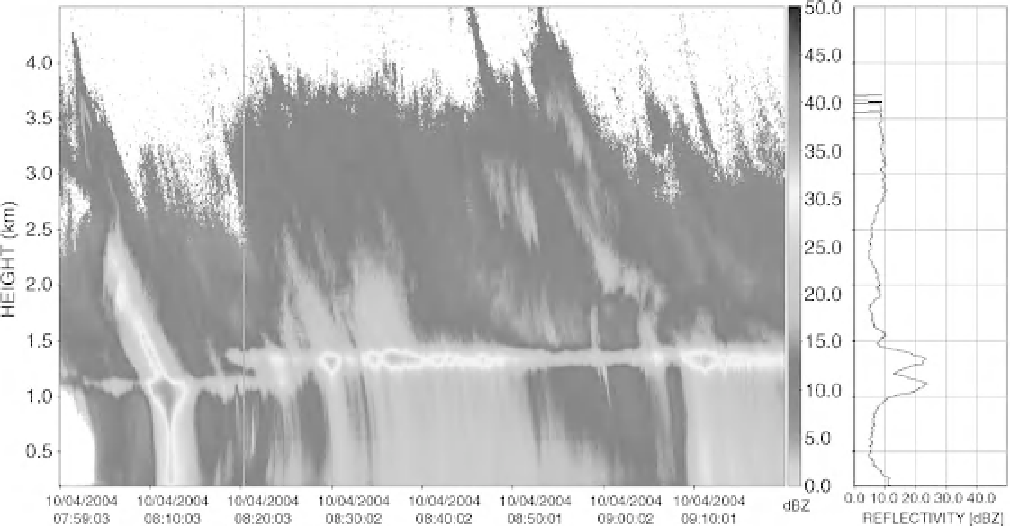Environmental Engineering Reference
In-Depth Information
Fig. 7.1
Variation of the vertical reflectivity profile of precipitation. The data were obtained with a Vertically Pointing
Radar (VPR) (see Cluckie et al. 2000). (See the colour version of this figure in Colour Plate section.)
enhanced reflectivity caused by melting snow-
flakes produces errors by up to a factor of five.
Various correction algorithms have been proposed
to correct for the variation of the Vertical Reflec-
tivity Profile (VRP) (Tilford 1992; Hardaker 1993;
Fabry 1994; Kitchen et al. 1994; Gray et al. 2002;
Rico-Ramirez 2004), but further research is
required to fully account for the variation of the
melting level in operational applications.
A feature is observed when temperature inver-
sions exist along the vertical. As ice particles fall
through an upper 0
C isotherm layer, they start
melting, then refreezing at another level of sub-
zero temperature until melting starts again. The
result, when observed by a VPR, is a double bright
band (see reflectivity plot to the left of Fig. 7.1).
Double bright bands are relatively common in
fronts, which tend to contain temperature inver-
sions. The problem for scanning radars is that the
effect is dynamic
close to the ground. Ground echoes from nearby
mountains can be misinterpreted as heavy precip-
itation and therefore overestimation may occur.
Correction for partial beam blockage is difficult
because the power is reflected back to the radar not
only from the main lobe but also from the second-
ary sidelobes. By knowing the characteristic of the
antenna radiation pattern it is sometimes possible
to apply a correction for partial blocking of the
radar beam, but in conditions where the beam
departs slightly from the standard propagation
pattern it is not so straightforward. The use of K
dp
for rainfall estimation may help in overcoming
problems due to partial beam blocking, but as
mentioned in the previous section, K
dp
is very
noisy and it is only useful in very heavy precipi-
tation. Therefore, it is important to establish
accurate corrections to overcome the effects of
partial blockage of the beam.
Attenuation by precipitation is another source
of error, especially at frequencies higher than
3GHz. To some extent this is now recognized as
posing a problem at C-band frequencies as well as
X-band. It has been shown that the attenuation is
and
can occur anywhere within
the radar image.
Partial blockage of the beam is especially prob-
lematic in hilly terrain. The radar generally scans
at low elevation angles to obtain measurements

